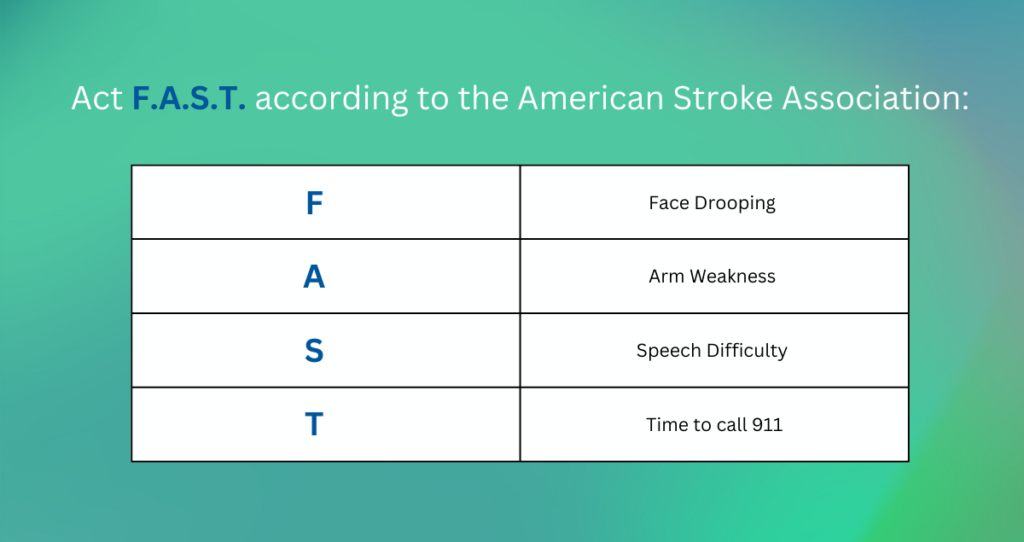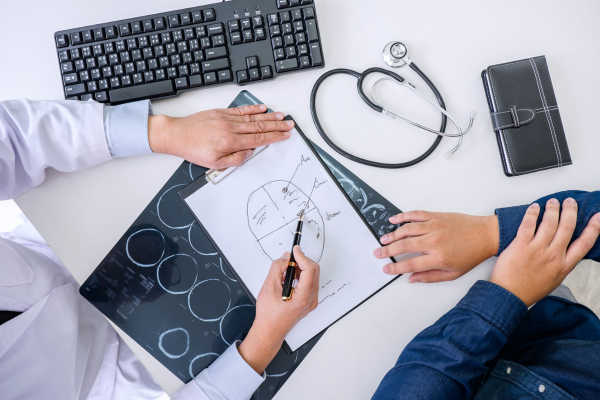A stroke can happen to anyone at any time, regardless of age or health status. In the United States, strokes are the No. 5 cause of death annually and are a leading cause of disability. While many people associate strokes with heart health, it’s a condition more closely related to the health of the brain.
According to the American Stroke Association, a stroke occurs when a blood vessel carrying oxygen to the brain is either blocked or ruptures, resulting in a section of the brain being deprived of oxygen. This leads to the loss of brain cells.
The good news is that recognizing the signs of a stroke and seeking medical attention immediately can greatly improve someone’s chance of a full recovery. Here are the signs you need to know so that you can act when it matters most.
The Signs of a Stroke
What does a stroke look like? According to the CDC, signs of a stroke include:
- Sudden numbness or weakness in the face, arm or leg, especially on one side of the body.
- Sudden confusion, trouble speaking or difficulty understanding speech.
- Sudden trouble seeing in one or both eyes.
- Sudden trouble walking, dizziness, loss of balance or lack of coordination.
- Sudden severe headache with no known cause.
If you or someone you know is exhibiting these symptoms call 911 immediately. Remember: Quick treatment is everything when it comes to stroke care. Don’t hesitate – a false alarm is much better than being too late.
Act F.A.S.T.

Having a hard time remembering these signs? The American Stroke Association recommends using the acronym F.A.S.T. to identify when someone is having a stroke:
F = Face Drooping – Does one side of the face droop or is it numb? Ask the person to smile. Is the person’s smile uneven?
A = Arm Weakness – Is one arm weak or numb? Ask the person to raise both arms. Does one arm drift downward?
S = Speech Difficulty – Is speech slurred?
T = Time to call 911
Knowing what to do in the event of a stroke can save precious minutes when every minute counts.
The Road to Recovery
The aftermath of a stroke looks different for different people, depending on the severity and the side of the brain where it occurred. A few of the most common symptoms in a recovering stroke patient include memory loss, vision problems, speech issues and paralysis.
Rehabilitation is an important tool in stroke recovery. Depending on the patient, they might receive physical therapy, occupational therapy, speech therapy or a combination of the three.
Physical therapy aims to improve general movement and function, while occupational therapy helps patients regain the ability to do certain occupations. Speech therapy helps those with communication problems through breathing exercises, memory challenges and exercises specifically designed to target oral muscles.
Recovering from a stroke doesn’t happen overnight, but rehabilitation can help patients work toward achieving more normalcy in their daily lives.
Convenient Rehabilitation at ACV Health
ACV Health, an outreach of Advent Christian Village, is proud to offer three types of rehabilitation to our patients under one convenient roof: physical therapy, occupational therapy and speech therapy.
Our mission is to provide comprehensive medical care in a convenient and welcoming environment, including the rehabilitation care you need, right where you need it. We’re also proud to be home to the only occupational therapist in the area. Click here to request an appointment at ACV Health today.
This blog is not intended as medical advice. If you have questions regarding stroke symptoms or options for rehabilitation, please speak with your doctor. If you are experiencing a medical emergency, please call 911.




